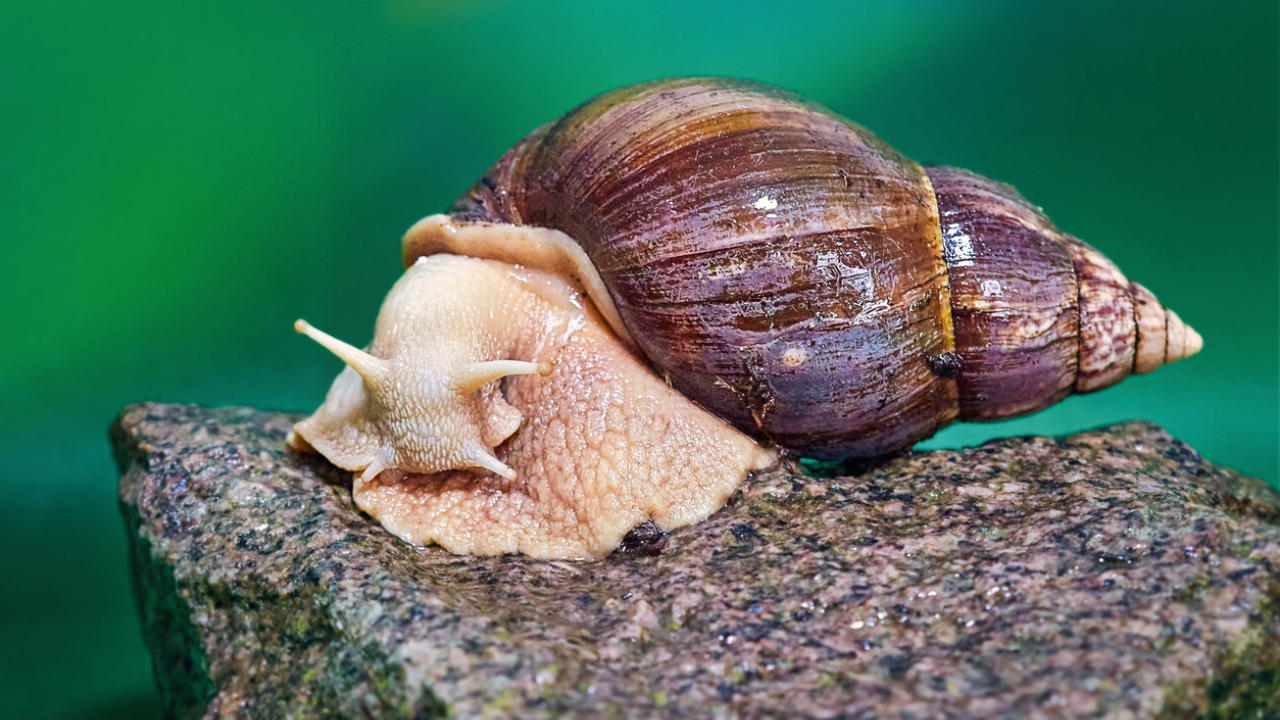The giant African snail acts as a host for several parasitic nematodes, including Angiostrongylus cantonensis and A. costaricensis.
Published Sep 11, 2025 | 6:02 PM ⚊ Updated Sep 11, 2025 | 6:02 PM

Representational image. Credit: iStock
Synopsis: Scientists warn that beyond threatening crops and local biodiversity, the snail poses a serious public health risk as it carries parasites linked to diseases such as eosinophilic meningoencephalitis. The city’s vulnerability to monsoon floods could worsen the situation, dispersing the snails and heightening chances of contamination.
The giant African snail (GAS, Lissachatina fulica), one of the world’s worst invasive species and a carrier of parasites that can cause brain infections in humans, has been spotted in several parts of Chennai, raising alarm among ecologists and health experts.
A recent field study by researchers from Chennai, Bengaluru, and the Bombay Natural History Society confirmed the presence of the invasive snail at St Thomas Mount, Tirusulam, and Perungalathur Hills.
Scientists warn that beyond threatening crops and local biodiversity, the snail poses a serious public health risk as it carries parasites linked to diseases such as eosinophilic meningoencephalitis. The city’s vulnerability to monsoon floods could worsen the situation, dispersing the snails and heightening chances of contamination.
The study, “Short note on the occurrence of the giant African snail in Chennai, Tamil Nadu”, led by Phillmon Smart Edward of Fedstan GMC, Chennai, stressed that the species is both an agricultural nuisance and a serious public health concern.
The giant African snail acts as an intermediate host for several parasitic nematodes, including Angiostrongylus cantonensis and A. costaricensis.
“These parasites cause eosinophilic meningoencephalitis and abdominal angiostrongyliasis in humans,” the paper noted.
The infections are often transmitted “through ingestion of contaminated gastropods or their residues,” making the snail’s presence in residential areas especially alarming.
Experts warn that the risks for Chennai are compounded by the city’s geography and climate. “Chennai faces significant risks from the presence of L. fulica, a vector for zoonotic diseases,” the study wrote.
The city’s susceptibility to monsoon floods, it added, “Worsens the spread of infections, as floodwaters disperse snails and contaminate resources.”
But, Researchers highlighted that the danger is not only limited to the rainy months alone. The problem becomes worse in the cooler, rainy winter season, when snails emerge from hibernation and spread more actively. This cyclical pattern increases the likelihood of human exposure to contaminated snails or their trails.
Beyond human health, the giant African snail has long been recognised as one of the world’s most destructive invasive species.
Listed among the ‘100 Worst Alien Invasive Species,’ it feeds on over 500 plant species, from garden vegetables to crops, making it a threat to both farms and ecosystems.
The study pointed out that the snail’s adaptability poses a direct threat to both biodiversity and agriculture. By consuming seedlings and damaging leaves, the species not only reduces farm yields but also disrupts local ecosystems by outcompeting native snails.
The history of its spread in India also underscores the scale of the problem. Originally Traced back in Kolkata during 1847 by British malacologist WH Benson, the snail gradually spread across southern states including Kerala, Karnataka, and Tamil Nadu.
Earlier surveys had already recorded its presence in districts such as Chennai, Chidambaram, Coimbatore, and Chengalpattu. The new findings show that despite decades of awareness, its presence in Chennai continues to expand.
The authors argue that without systematic documentation of its distribution, Chennai risks underestimating the ecological damage caused by the species.
Researchers behind the study stressed that the presence of the giant African snail cannot be ignored as an isolated finding. They argue that the city urgently needs a comprehensive population survey to map the scale of the infestation and assess its potential impact on health, agriculture, and biodiversity.
Further, the team added that this survey should be followed by effective monitoring and management strategies. Without such interventions, the city risks facing repeated outbreaks that affect both livelihoods and public health.
They highlighted that the challenge is not unique to Chennai but part of a wider struggle against invasive species in India. However, given the city’s vulnerability, the study warns that proactive control measures are especially critical here.
For now, ecologists say the findings should serve as a wake-up call. Public health authorities, local bodies, and environmental agencies will need to coordinate if Chennai is to curb the spread of the invasive snail and prevent its silent march across the city’s neighborhoods.
(Edited by Amit Vasudev)
